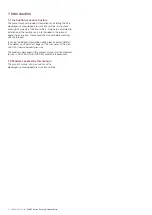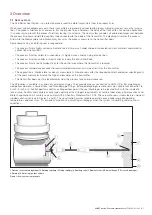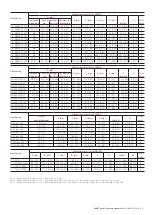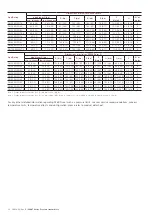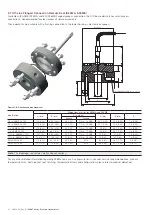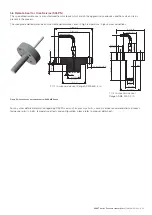
4 Installation
4.1 General
The transmitters with remote seals are suitable for use on the
following pressure and differential pressure measurement
applications:
— FLOW MEASUREMENT
— LIQUID LEVEL MEASUREMENT
— INTERFACE LEVEL MEASUREMENT
— DENSITY MEASUREMENT
— GAUGE PRESSURE MEASUREMENT
— ABSOLUTE PRESSURE MEASUREMENT
Each application has certain unique requirements which
influence the selection of the transmitter and seal locations. In
general the flow and gauge pressure applications allow the
greatest flexibility in selection of a location. Liquid level
applications impose restrictions on the relative elevations of the
transmitter and seals when the tank operates under vacuum
and absolute pressure applications impose similar restrictions
when the lower range value is less than atmospheric pressure
(nominally 14.7 psia). Transmitters with remote seals measure
pressure from two sources: the applied process pressure or
differential pressure, and the head pressure developed by the
weight of the liquid column in the seal system. The head
pressures are a function of transmitter and seal locations as
follows:
—
Two
Seals
On a DP transmitter with a seal on both the high and low
sides, the transmitter measures the head pressure
resulting from any difference in elevation between the
seals and the output change is directly proportional to the
elevation difference. The head pressure has no effect on
transmitter output when both seals are at the same
elevation. Changing the elevation of the seals relative to
the transmitter has no effect as long as the elevation of
one seal relative to the other is not changed.
—
One
Seal
On a transmitter with one seal, the head pressure from the
seal system is measured directly. Any change in the
elevation of the seal causes a change in the measured
head pressure and the transmitter output changes in
direct proportion to the elevation change.
Note.
When handling and/or installing the transmitter with
remote seal(s), please consider that the minimum bending
radius of the capillary system is 10 cm (3.9 in).
For most flow, gauge pressure, and absolute pressure
installations the effect of head pressure is relatively minor and
can be canceled out by adjusting zero with the transmitter and
seals in their installation position while a known process
pressure is applied. For liquid level installations, head pressures
have a more significant impact on calibration requirements
because the nature of the installation requires a substantial
difference in elevation between the high and low side seals.
See the Liquid Level Measurement Section for more
information.
4.2 Flow measurement
Differential pressure transmitters with two remote seals can be
used for both horizontal and vertical flow measurement
installations by mean of a Wedge Flow Element. In both
horizontal and vertical installations, the transmitter can be
placed in any convenient location either above or below the
elevation of the seal elements. The high side seal element must
be located on the upstream side of the flow restriction. To
ensure accurate measurements on liquid flow applications, the
flow restriction must be located in a section of the pipe line
which remains full under all flow conditions.
—
Horizontal
Installation
In a horizontal installation both seal elements are at the
same elevation and head pressures resulting from the
filling liquid are equal on the high and low side of the
transmitter. Thus, the transmitter calibration can be zero
based for this installation. If the process contains
suspended solids, the seal elements should be located at
the top of the pipe to avoid collection of solid material on
the seal diaphragm surfaces.
—
Vertical
installation
In a vertical installation, the elevation difference between
the two seals applies a differential pressure when there is
no flow. When the pipe is full at no flow the initial
differential is a function of the distance between the seals
and the difference in density between the process liquid
and the fill liquid.
Figure 2: Primary element (Wedge) - vertical and horizontal installations for
flow measurements
2600T Series Pressure transmitters |
OI/S266-EN Rev. B 9




